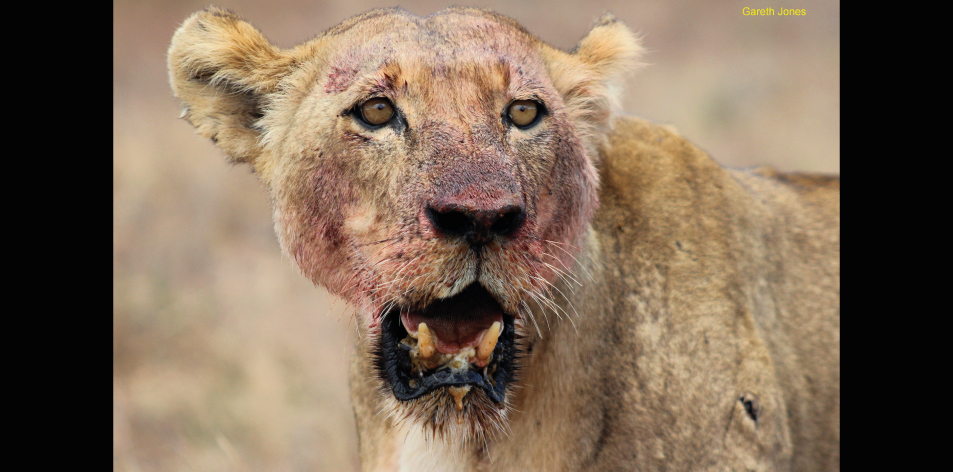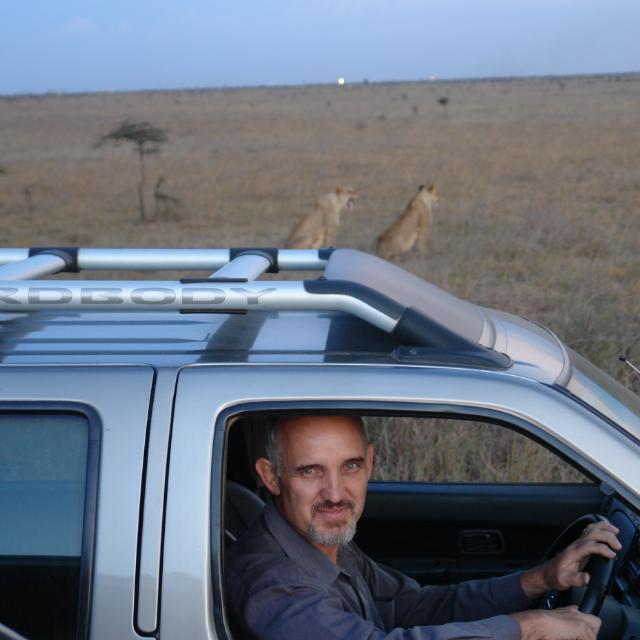
Panthera Leo!! – Article by Gareth Jones
NAIROBI NATIONAL PARK’S LIONS ALSO KNOWN AS PANTHERA LEO – By GARETH JONES
For thousands of years, lions (Panthera leo) have roamed the area we call Nairobi today. Humans have also co-existed with wildlife in this area for thousands of years. However, within the last 120 years, there have been dramatic changes due to rapid human developments. The area immediately south of central Nairobi used to be known as “commonage” in the 1920s & 1930s, and military guns used to fire practice rounds across the plains during the second world war. It was thanks to the efforts of people like Mervyn Cowie, that the Nairobi National Park became the first National park to be gazetted in Kenya on the 16th of December 1946.
It is an amazing miracle that wildlife, including lions, have managed to survive for so long next to a growing ever-expanding mega-city. The Nairobi lions are indeed remarkable in that they live with so many millions of humans around them, and tourists come from all over the world just for a glimpse of the just over 30 lions that frequent the tiny 117 sq / Nairobi National Park. However, it is extremely alarming to note that Africa’s lion population has crashed dramatically after years of indiscriminate killing, habitat loss, prey depletion, poaching and trophy hunting. The African lion population is estimated to have fallen from 1.2 million in 1800 to about 18,000 in 2018. This is equivalent to a 98% decrease over 220 years.
In the last century from over 200,000 lions to about 18,000 lions, with 23 African countries officially declaring lions to be locally extinct. In Kenya, a nation that is world-famous for wildlife and particularly lions, the population has dropped below 2000 lions. So effectively Africa only has about 2% remaining of the lion population that once roamed vast areas. However, there are pockets of protection in some national parks where lions still thrive.
It is interesting to note that the average density of lions in Kenya in protected areas is only 1 lion per 48 square km, so the Nairobi National Park has the highest lion density in Kenya with over 30 lions in an area of only 117 square km. Compared to the national average only less than 3 lions would be found within other 117 square km areas, meaning that the Nairobi lion population is over 10 times the national population density per square km. While this might seem high in the year 2019, in fact before mankind interrupted the area now known as the Nairobi National Park had an incredibly thriving and diverse wildlife population that included a healthy lion population of possibly at least 50 lions. Naturally, the lions do tend to move beyond the park boundaries at times especially when the seasons change and the herds move out of the park, then the lions follow.
Having an isolated lion population in a tiny national park presents a number of challenges. The lions continue to breed within their own gene pool, this is not a healthy situation and the Kenya Wildlife Service needs to find a solution, that could include AI (Artificial Insemination – successful in South Africa for the first time in October 2018 – ref The University of Pretoria). This breakthrough brings new hope for introducing genes into lionesses in the wild.
Over the years there have been a number of very sad occasions mostly when lions move out of the relative safety of the park in the rainy season, and as a consequence start killing local livestock. The locals in turn then seek revenge & some lions are killed. However, there has been a measure of good success in recent years with the installation of flashing LED “lion lights” around livestock bomas, significantly reducing the amount of predation on local livestock.
The park has natural limitations regarding the amount of available grazing (food – biomass) for herbivores. At times controlled “cold” fires do result in dead grass being burnt away and the result is often good especially if the burn program simulates lightning just before some good rains. When there is plenty of grazing available then the herbivores have less reason to migrate out of the park, therefore causing the lions to also stay inside the park.
Supporting the park by ensuring regular visits will help to ensure that the Nairobi National Park retains its status as the world’s only national park within a mega-city. People come from all over the world to visit the park, and one of the most common questions they ask is “where are the lions?” Imagine a future moment, it is the year 2046, exactly 100 years after the Nairobi National Park was gazetted. Will people lament and mourn over what has been lost? Or will people celebrate over the wonderful success that was achieved in keeping the park for future generations? The future of the park depends directly on the actions of people in this current time we live in. The park is well worth protecting and so the constant battle continues for the Nairobi lions to survive, we hope and pray that God will make a way where there sometimes seems no way for the Nairobi National Park to survive and thrive into the future!
The park is open daily from 06h00 to 19h00.
Gallery


